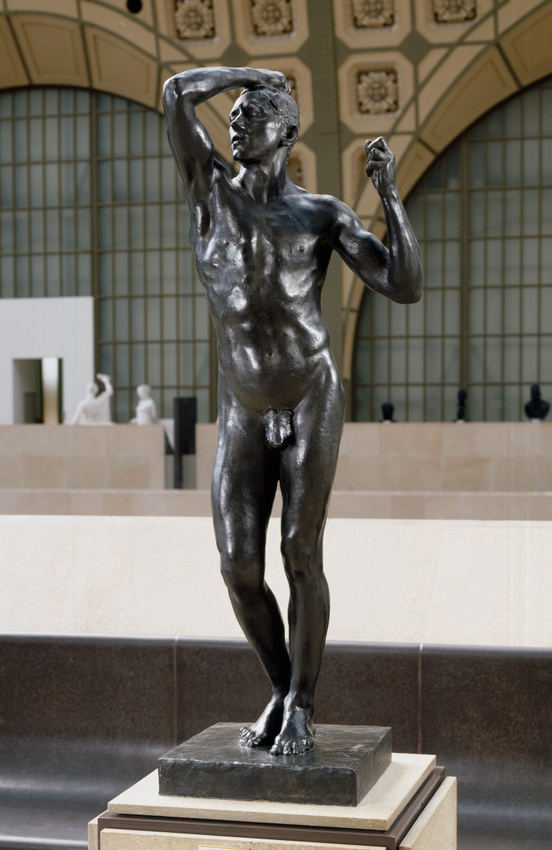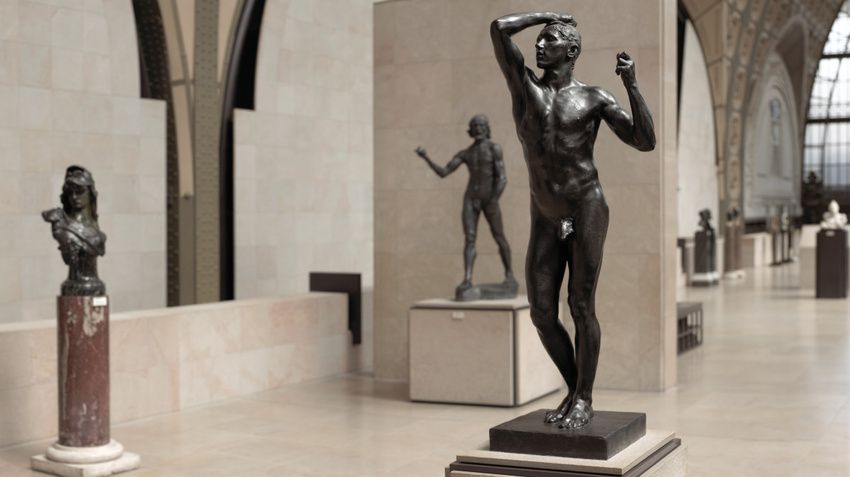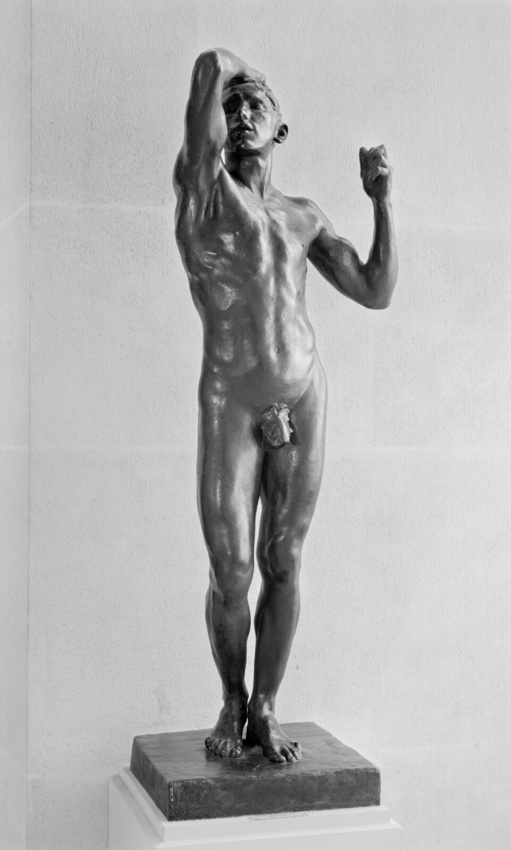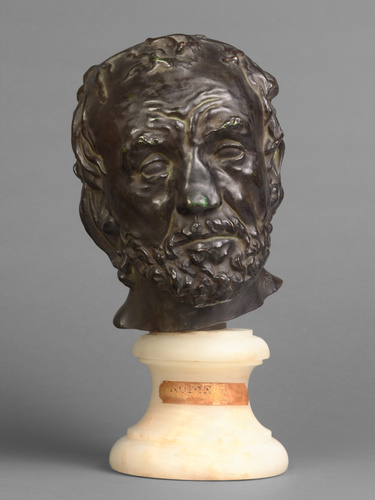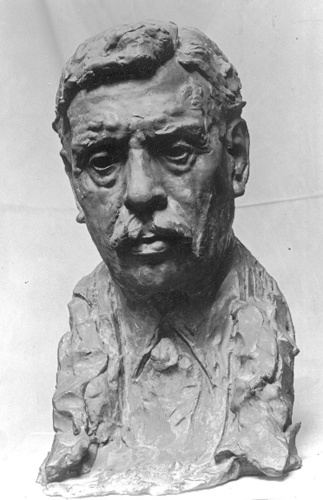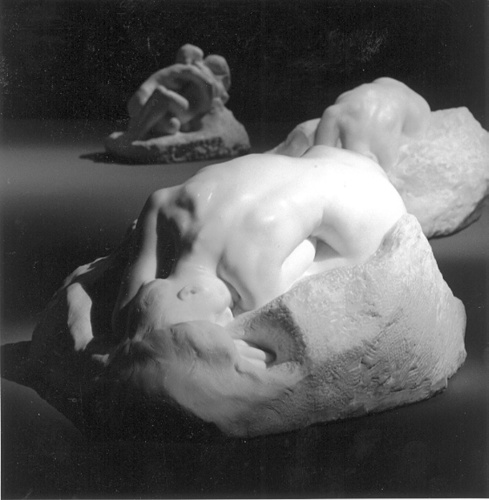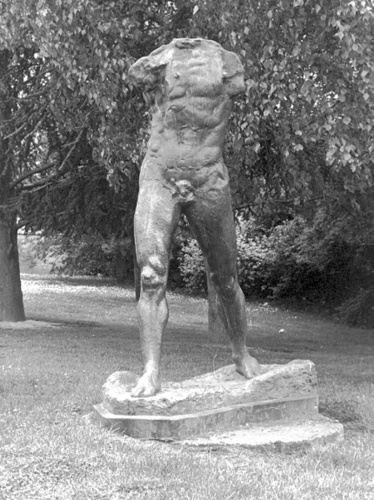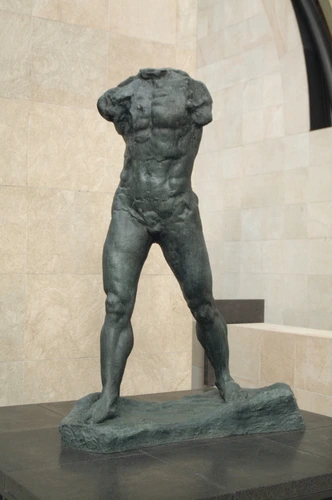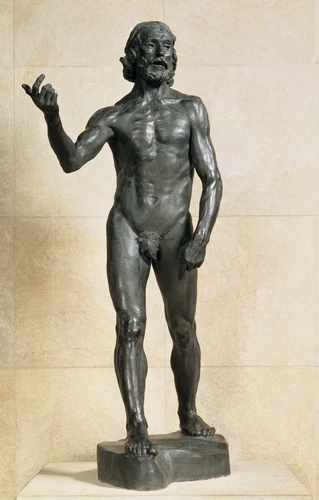L'Age d'airain
After his demobilisation in January 1871, Rodin returned to Brussels. He lived there for six years since the burgomasters offered work. In 1876 he made a pilgrimage to Italy, discovering Florence, the San Lorenzo Chapel and Rome. Michelangelo, whom he admired above all, "let him in on a few of his secrets"
When he returned to Brussels, Rodin continued work on a male nude which had kept him occupied since October 1875. In January 1877, the plaster model was exhibited in the Artistic and Literary Circle of Brussels. But an article in L'Etoile belge claimed that it had been cast from a live model. This accusation haunted Rodin when he submitted his figure for the Paris Salon under the title The Bronze Age. In his defence, he offered to show the jury photographs and casts. His Belgian sculptor friends rallied round and Gustave Biot wrote, "I find it strange that a certificate such as you have asked me to provide could be needed in Paris, but it is a pleasure and duty for me to give it to you."Despite the appointment of a Director of Fine Arts, Edmund Turquet, who was more sympathetic to Rodin, the inspection committee, sent in February 1880, refused to allow this model to be cast in bronze. So a number of well-known sculptors then stepped in—Dubois, Falguière, Carrier-Belleuse, Chapu, Chaplain, Thomas, Delaplanche—insisting that the sculptor's skill in improvising from memory, "his energy and extraordinarily powerful modelling" proved that he had executed The Bronze Age without cheating.
Turquet was convinced, bought the plaster cast and ordered the bronze from the Thiébaut brothers' foundry. That copy, now in the Musée d'Orsay, was exhibited at the Salon of 1880 at which Rodin was awarded a third class medal. The Bronze Age enjoyed instant international success.
